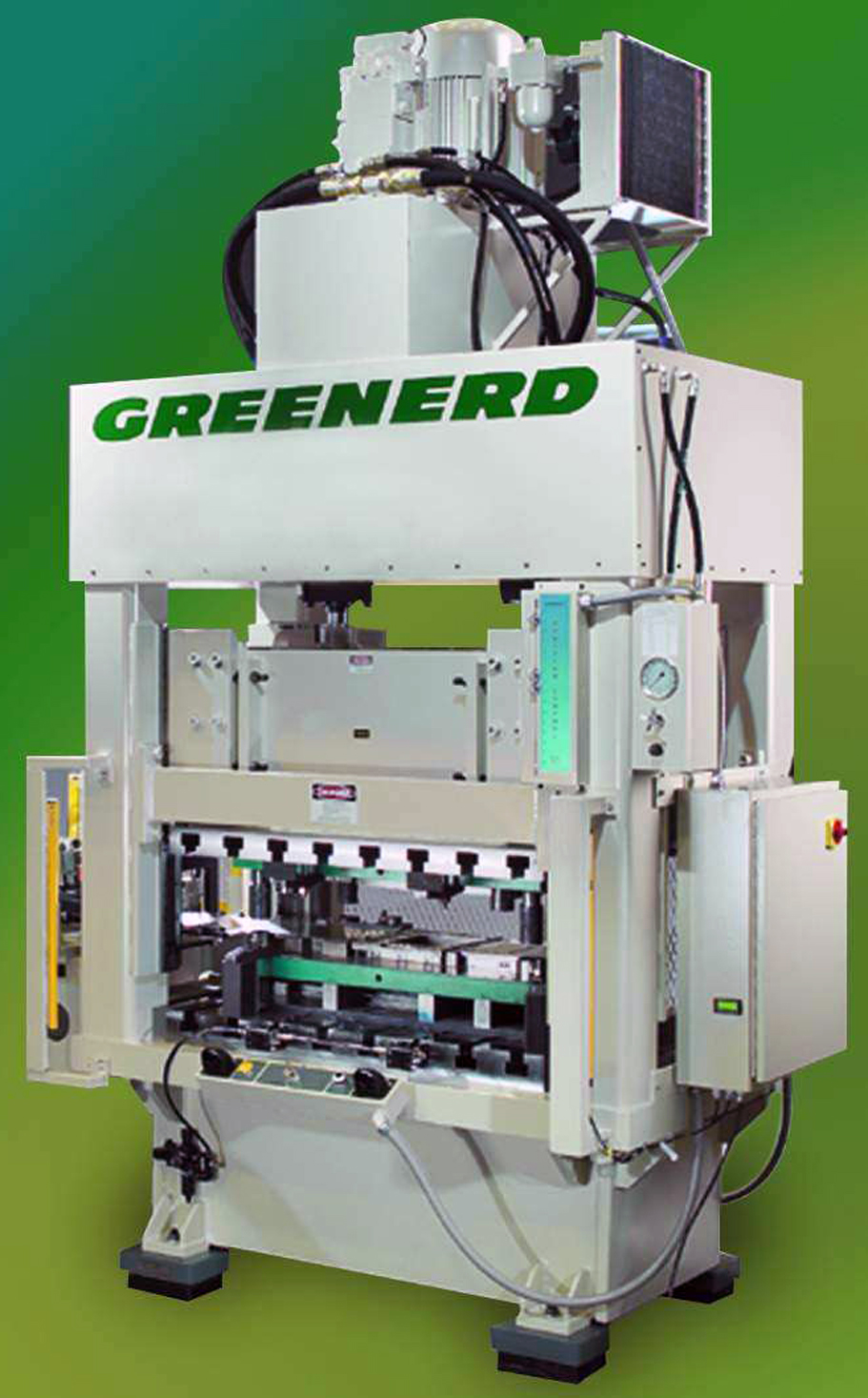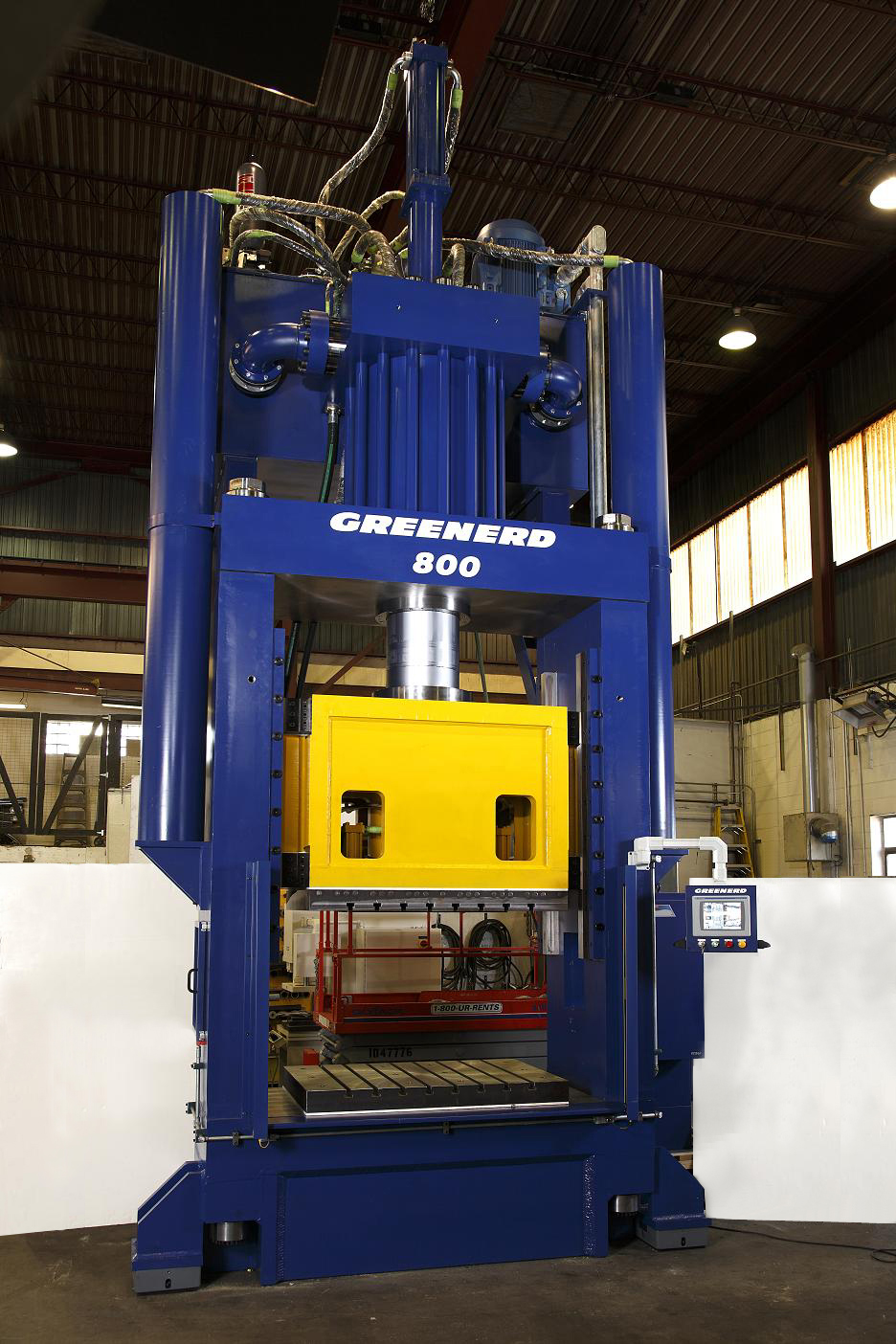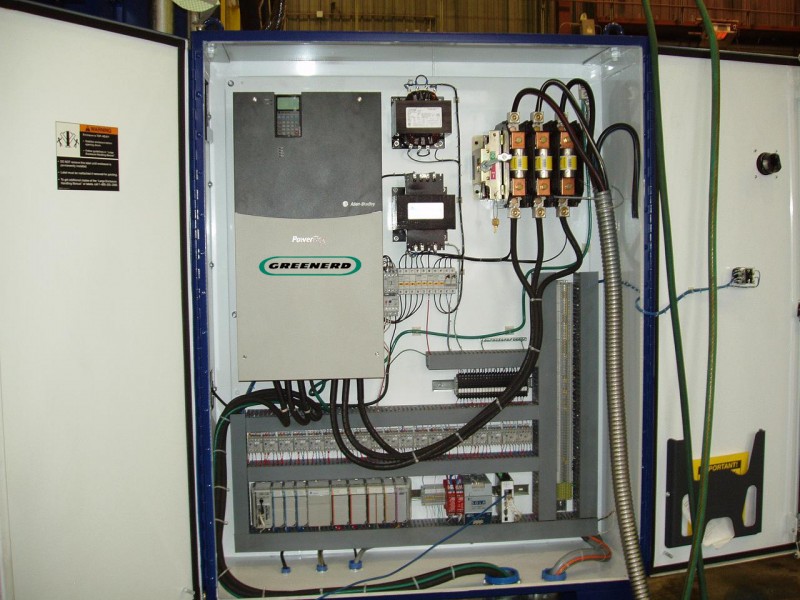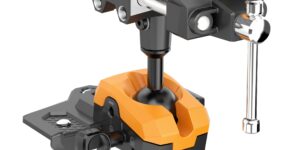VFDs and the Top Ten Reasons to Go Hydraulic
Do you need to become more competitive? Here’s how to carefully assess the jobs you are quoting with your current press processes and discover how hydraulic press technology will improve your productivity and your bottom line as you compete for smaller lots and varied applications.
Posted: March 16, 2012
4: BUILT-IN OVERLOAD PROTECTION
Hydraulic presses provide built-in overload protection, which means a 100 ton hydraulic press will exert only the tonnage that is specified – 100 tons pressure if it is set for 100 tons, or less if it is set for less – no matter what mistakes you make in set-up. This eliminates worries about overloading or breaking the press or smashing a die. When a hydraulic press reaches its set pressure, that’s all the pressure there is. The relief valve opens at that limit and there is no danger of overload.
The built-in overload protection applies to the tools, too. If tooling is built to withstand a certain load, there is no danger of damaging them because of overloading. Tools can be sized to withstand the load of a particular job, not a particular press. The pressure of the press can be set down to suit the job. The lack of impact, shock, and vibration promotes longer tool life.
5: MUCH LOWER OPERATING COSTS
Hydraulic presses are relatively simple from a design perspective, which can provide a significant cost advantage over mechanical presses of comparable sizes. The numbers of moving parts are few and these are fully lubricated in a flow of pressurized oil. Breakdowns are infrequent but when they do occur, they are usually minor. Typical routine maintenance items may include replacements of packing, solenoid coils, and occasionally a valve. Not only are these components inexpensive, but also they are easily replaced without having to disassemble the entire machine. All of this translates into more uptime and lower maintenance costs.
6: LARGER CAPACITIES FOR LESS COST
Buying certain kinds of capacity is easier and less expensive in hydraulic presses. Stroke lengths of 12 in, 18 in, and 24 in are common. Extra stroke length is easy to provide. Open gap (daylight) can be added too, without much additional cost. Similarly, larger table areas and small presses with big bed areas can be provided. Large 200 ton presses with relatively small beds are available; the tonnage of the press doesn’t dictate what the bed size will be.
7: GREATER CONTROL
With a hydraulic press, the ram force, the direction, the speed, the release of force, and the duration of pressure dwell can all be adjusted and customized to fit a particular job. Jobs with light dies can be done with the pressure turned down. The ram can be made to approach the work rapidly, then shift to a slower speed before contacting the work. This prolongs tool life. Timers, feeders, heaters, coolers, and a variety of auxiliary functions can be merged into the sequence of the press cycle to suit the job.
8: NOISE REDUCTION
Fewer moving parts and the elimination of a flywheel reduce the overall noise level produced by hydraulic presses compared to those of mechanical presses. Properly sized and mounted pumping units meet and exceed current federal standards for noise, even with the pump under full pressure. Because each phase of the ram movement can be controlled, noise levels can also be controlled. A hydraulic ram can be programmed to pass through the work slowly and quietly. It is also beneficial to submerge the hydraulic pump in the oil reservoir to allow the oil to absorb most of the noise from the pump.
9: MAXIMIZE YOUR SPACE
Hydraulic presses feature a compact design that is ideal for operating on expensive shop floors today. A typical 20 ton hydraulic press is eight ft high, six ft deep, and two ft wide. A 200 ton press is only ten ft high, nine ft deep, and a little over three ft wide. At ten times the capacity, the 200 ton press only takes up 50 percent more floor space. This means you can maximize your press room floor space with more streamlined machinery.
Multiple hydraulic press functions can be designed into a single frame to form a “cell grouping” in a very small foot print, thus eliminating the need to purchase multiple frames for each press and enabling easier automation of press functions. For example, in a multi-draw press operation, a cell grouping makes automating the transfer of product from one station to another an easier process.
10: STAY SAFE
Improperly used, all machines are potentially dangerous. But because ram movements can be controlled with hydraulic presses, it’s easy to make a hydraulic machine safe. Non-tie down, anti-repeat, dual palm button controls are typically used. The interlocking of guards, as well as other safety devices, is relatively easy because of the nature of a hydraulic press control system.













